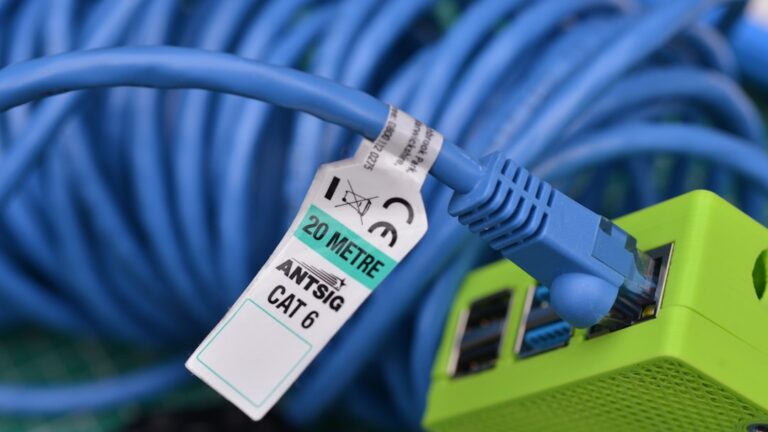Selecting the ideal desk setup is a foundational step in creating an efficient and productive workspace. The desk itself should not only accommodate your equipment but also reflect your personal style and work habits. When considering the type of desk, one must evaluate the available space, the nature of the work being performed, and the aesthetic preferences that will make the workspace inviting.
For instance, a standing desk can be an excellent choice for those who prefer to alternate between sitting and standing throughout the day, promoting better posture and reducing the risks associated with prolonged sitting. Conversely, a traditional desk with ample surface area may be more suitable for individuals who require multiple devices or extensive paperwork. In addition to the desk type, the layout of the workspace plays a crucial role in productivity.
Positioning the desk near a window can provide natural light, which has been shown to enhance mood and focus. However, it is essential to consider glare on screens and the potential for distractions from outside. Furthermore, the arrangement of other furniture, such as chairs and shelves, should facilitate easy movement and access to frequently used items.
A well-thought-out desk setup not only enhances functionality but also contributes to a sense of order and calm, which can significantly impact overall work performance.
Organizing Cables and Wires
In today’s tech-driven world, managing cables and wires is a critical aspect of maintaining an organized workspace. A cluttered array of cords can lead to frustration and distraction, detracting from productivity. To combat this issue, various cable management solutions are available that can help streamline the appearance of your workspace.
For example, cable clips can be attached to the edge of a desk to keep charging cables and power cords neatly in place. Additionally, using cable sleeves or conduits can bundle multiple wires together, reducing visual clutter while protecting them from wear and tear. Another effective strategy is to utilize cable trays or boxes that can be mounted under the desk or placed discreetly on the floor.
These containers not only hide unsightly cables but also prevent them from becoming tripping hazards. Furthermore, labeling cables can simplify troubleshooting and make it easier to identify which cord belongs to which device. By investing time in organizing cables and wires, you create a more visually appealing environment that fosters concentration and efficiency.
Setting Up a Multi-Monitor Display

The use of multiple monitors has become increasingly popular among professionals seeking to enhance their productivity. A multi-monitor setup allows users to multitask more effectively by providing additional screen real estate for various applications. For instance, a graphic designer might use one monitor for design work while keeping reference materials open on another screen.
This arrangement minimizes the need to switch between tabs or windows, streamlining workflows and reducing cognitive load. When setting up a multi-monitor display, it is essential to consider the alignment and positioning of each monitor. Ideally, monitors should be at eye level to prevent neck strain and should be positioned at an angle that allows for easy viewing without excessive head movement.
Additionally, utilizing software tools that facilitate window management can further enhance the experience by allowing users to snap windows into place or create virtual desktops tailored to specific tasks. By thoughtfully configuring a multi-monitor display, individuals can significantly boost their efficiency and create a more dynamic work environment.
Creating a Comfortable Ergonomic Workspace
| Metrics | Data |
|---|---|
| Desk Height | 29-30 inches |
| Chair Height | Adjustable to support lower back |
| Monitor Position | Eye level and arm’s length away |
| Keyboard Position | Elbows at 90-degree angle |
| Lighting | Natural light or adjustable desk lamp |
Ergonomics is a critical consideration when designing a workspace that promotes health and comfort. An ergonomic setup minimizes strain on the body and reduces the risk of musculoskeletal disorders associated with prolonged sitting or poor posture. Key elements of an ergonomic workspace include an adjustable chair that supports the lower back, a desk at an appropriate height, and monitor placement that encourages a neutral neck position.
For example, the top of the monitor screen should be at or slightly below eye level, allowing for a natural gaze without tilting the head. In addition to furniture adjustments, incorporating accessories such as keyboard trays or footrests can further enhance comfort. A keyboard tray allows for proper wrist alignment while typing, while a footrest can help maintain proper posture by supporting the feet when seated.
Regular breaks are also essential; standing up or stretching every hour can alleviate tension and improve circulation. By prioritizing ergonomic principles in workspace design, individuals can create an environment that not only enhances productivity but also promotes long-term health.
Implementing Smart Lighting Solutions
Lighting plays a pivotal role in creating an effective workspace atmosphere. Poor lighting can lead to eye strain, fatigue, and decreased productivity. Therefore, implementing smart lighting solutions can significantly enhance both comfort and functionality in a home office or professional setting.
Smart bulbs allow users to adjust brightness levels and color temperatures according to their preferences or time of day. For instance, cooler light tones can be beneficial during daytime hours for increased alertness, while warmer tones may create a more relaxed ambiance in the evening. Incorporating task lighting is another effective strategy for optimizing workspace illumination.
Desk lamps with adjustable arms can direct light precisely where it is needed most, reducing shadows on work surfaces and minimizing glare on screens. Additionally, utilizing natural light as much as possible can improve mood and energy levels; strategically placing mirrors can help reflect light into darker corners of the room. By thoughtfully considering lighting options, individuals can create an environment that fosters focus and creativity.
Integrating Voice-Activated Assistants

Voice-activated assistants have revolutionized how we interact with technology in our daily lives, including within our workspaces. Devices like Amazon Echo or Google Nest allow users to perform tasks hands-free, enhancing efficiency and convenience. For example, setting reminders, managing calendars, or controlling smart home devices can all be accomplished through simple voice commands.
This capability is particularly beneficial in busy work environments where multitasking is essential; users can continue working on projects while simultaneously managing other responsibilities. Moreover, integrating voice-activated assistants into a workspace can streamline communication processes. For instance, users can dictate emails or messages without needing to type them out manually, saving time and reducing repetitive strain injuries associated with prolonged typing.
Additionally, these assistants often come equipped with features that allow for seamless integration with other smart devices in the office, such as adjusting lighting or temperature settings with voice commands. By leveraging voice technology in the workplace, individuals can create a more efficient and responsive work environment.
Utilizing Wireless Charging Stations
The proliferation of mobile devices has made wireless charging stations an increasingly valuable addition to modern workspaces. These stations eliminate the need for tangled cords and provide a convenient way to keep devices powered throughout the day. Many wireless chargers are designed with multiple charging pads, allowing users to charge several devices simultaneously without cluttering their desks with cables.
This not only enhances organization but also ensures that devices are always ready for use when needed. Incorporating wireless charging solutions into your desk setup can also promote a cleaner aesthetic. By minimizing visible cords and creating designated charging areas, you foster an environment that feels more streamlined and professional.
Furthermore, some wireless chargers come equipped with additional features such as built-in USB ports or even integrated speakers, adding further functionality to your workspace. As technology continues to evolve, embracing wireless charging solutions can significantly enhance both convenience and organization in any office setting.
Incorporating Smart Storage Solutions
Effective storage solutions are essential for maintaining an organized workspace that promotes productivity. Smart storage options go beyond traditional filing cabinets; they incorporate innovative designs that maximize space while keeping essential items easily accessible. For instance, modular shelving units allow for customization based on individual needs and preferences, enabling users to create designated areas for different types of materials—be it books, documents, or office supplies.
Additionally, utilizing vertical space through wall-mounted storage solutions can free up valuable desk space while providing easy access to frequently used items. Drawer organizers are another practical solution; they help categorize supplies such as pens, paper clips, and sticky notes so that everything has its place. Furthermore, digital storage solutions should not be overlooked; cloud-based services enable users to store files securely while minimizing physical clutter in their workspace.
By thoughtfully incorporating smart storage solutions into your office design, you create an environment that fosters efficiency and creativity while reducing stress associated with disorganization.
FAQs
What is a smart workspace?
A smart workspace is a modern and efficient work environment that integrates technology to enhance productivity, collaboration, and comfort for its users.
What are some tech setup ideas for building a smart workspace?
Some tech setup ideas for building a smart workspace include using ergonomic furniture, implementing wireless charging stations, utilizing smart lighting and climate control systems, setting up dual monitors for increased productivity, and integrating collaboration tools such as video conferencing equipment.
How can smart technology improve a workspace?
Smart technology can improve a workspace by automating routine tasks, providing real-time data and analytics, enhancing communication and collaboration among team members, and creating a more comfortable and personalized work environment.
What are the benefits of having a smart workspace?
The benefits of having a smart workspace include increased productivity, improved employee satisfaction and well-being, reduced energy consumption, streamlined workflows, and the ability to adapt to changing work requirements and technologies.
How can I implement a smart workspace in my office?
To implement a smart workspace in your office, you can start by assessing your current technology and infrastructure, identifying areas for improvement, researching and selecting appropriate smart devices and systems, and gradually integrating them into your workspace while considering the needs and preferences of your employees.


















